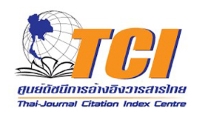JOURNAL DETAIL
Ascorbic Acid Application Improves Salinity Stress Tolerance in Wheat
Paper Type |
Contributed Paper |
Title |
Ascorbic Acid Application Improves Salinity Stress Tolerance in Wheat |
Author |
Manzer H Siddiqui*, Saud A Alamri, Mutahhar YY Al-Khaishany, Mohammed A Al-Qutami and Hayssam M Ali |
Email |
manzerhs@yahoo.co.in |
|
Abstract: Salinization converts fertile land into infertile land, and is a severe threat to food security and crop productivity worldwide. In this study, we treated wheat plants (Triticum aestivum L. var. Yecora Rojo) with or without ascorbic acid (ASA), both under salt stress and non-stress conditions, to understand the effect of ASA on plant response to salinity stress. We monitored the amounts of photosynthetic pigments, osmoprotectants, and antioxidant enzymes. Application of ASA enhanced growth characteristics, such as shoot and root length, shoot and root fresh weight, shoot and root dry weight. It also improved the physiological and biochemical parameters, such as carbonic anhydrase (CA) and Rubisco activities, photosynthetic pigments (Chl a, b, and Total Chl), and compatible solutes (proline [Pro] and glycinebetaine [GB]) contents, under non-stress conditions. Under NaCl stress, the ASA addition improved growth attributes, levels of pigments, accumulation of Pro and GB, and antioxidant enzymes activities, such as superoxide dismutase, peroxidase, catalase, and ascorbate peroxidase. Also, ASA decreased Chl degradation, electrolyte leakage, and concentration of malondialdehyde and hydrogen peroxide in wheat plants. We conclude that supplementing ASA can benefit
wheat plants by improving their tolerance to salinity stress. |
|
Start & End Page |
1296 - 1306 |
Received Date |
2017-03-31 |
Revised Date |
|
Accepted Date |
2017-07-31 |
Full Text |
Download |
Keyword |
Triticum aestivum, ascorbic acid, salinity, reactive oxygen species, Chlorophyll degradation, rubisco |
Volume |
Vol.45 No.3 (May 2018) |
DOI |
|
Citation |
Siddiqui* M.H., Alamri S.A., Al-Khaishany M.Y., Al-Qutami M.A. and Ali H.M., Ascorbic Acid Application Improves Salinity Stress Tolerance in Wheat , Chiang Mai Journal of Science, 2018; 45(3): 1296-1306. |
| View:928 Download:375 | |
RELATED ARTICLE
Regulation of Reactive Oxygen Species Metabolism by Trehalose Application Related to Alleviate Chilling Injury Development in Harvested ‘Kim Ju’ Guava Fruit
Article ID: e2025015
Author:Thanakorn Vichaiya, Sirawich Chotikakham and Sitthisak Intarasit
Vol.52 No.2 (March 2025) View: 1,025 Download:468
Article ID: e2025015
Author:Thanakorn Vichaiya, Sirawich Chotikakham and Sitthisak Intarasit
Vol.52 No.2 (March 2025) View: 1,025 Download:468
Cytoprotection Against Oxidative Damage by Bioaccessible Fraction of Unripe Musa balbisiana Fruit Extract in An Intestinal-like Epithelial Cell Model
Article ID: e2024081
Author:Areeya Tohteb, Thammarat Kaewmanee, Piyawan Boonyanuphong and Tanyarath Utaipan
Vol.51 No.5 (September 2024) View: 822 Download:411
Article ID: e2024081
Author:Areeya Tohteb, Thammarat Kaewmanee, Piyawan Boonyanuphong and Tanyarath Utaipan
Vol.51 No.5 (September 2024) View: 822 Download:411
Bioremediation of Cadmium and Nickel from a Saline Aquatic Environment Using Ceratophyllum demersum
page: 339 - 347
Author:Amir Parnian, Mostafa Chorom, Neemat Jaafarzadeh, Hadi Pirasteh Anosheh, Munir Ozturk, Dilek Unal, Dilek Demirezen Yilmaz and Volkan Altay
Vol.49 No.2 (March 2022) View: 1,627 Download:347
page: 339 - 347
Author:Amir Parnian, Mostafa Chorom, Neemat Jaafarzadeh, Hadi Pirasteh Anosheh, Munir Ozturk, Dilek Unal, Dilek Demirezen Yilmaz and Volkan Altay
Vol.49 No.2 (March 2022) View: 1,627 Download:347
Short-term Impacts of Soaking Periods and NaCl Concentrations to Photosynthetic O2 Evolution and CO2 Uptake of Mangrove Seedlings from East Sumatera Coastline of Indonesia
page: 64 - 72
Author:Tengku Zia Ulqodry, Akihiro Nose, Shao-Hui Zheng, Andi Agussalim, Indah Widiastuti
Vol.47 No.1 (January 2020) View: 986 Download:579
page: 64 - 72
Author:Tengku Zia Ulqodry, Akihiro Nose, Shao-Hui Zheng, Andi Agussalim, Indah Widiastuti
Vol.47 No.1 (January 2020) View: 986 Download:579
Reactive Oxygen Species Scavenging Enzyme Activities in Berangan Banana Plant Infected by Fusarium oxysporum f. sp. cubense
page: 1084 - 1095
Author:Fung Shi Ming, Zuliana Razali and Chandran Somasundram*
Vol.46 No.6 (November 2019) View: 2,026 Download:502
page: 1084 - 1095
Author:Fung Shi Ming, Zuliana Razali and Chandran Somasundram*
Vol.46 No.6 (November 2019) View: 2,026 Download:502
Optimizing NaCl and KNO3 Concentrations for High b-carotene Production in Photobioreactor by Dunaliella salina KU11 Isolated from Saline Soil Sample
page: 106 - 115
Author:Ramaraj Sathasivam, Piyawat Pongpadung, Jantana Praiboon, Anong Chirapart, Savitr Trakulnaleamsai, Sittiruk Roytrakul and Niran Juntawong
Vol.45 No.1 (January 2018) View: 938 Download:368
page: 106 - 115
Author:Ramaraj Sathasivam, Piyawat Pongpadung, Jantana Praiboon, Anong Chirapart, Savitr Trakulnaleamsai, Sittiruk Roytrakul and Niran Juntawong
Vol.45 No.1 (January 2018) View: 938 Download:368
Amperometric Ascorbic Acid Biosensors Based on the Oxygen and Glassy Carbon Electrodes Modified with Ascorbate Oxidase Immobilized-silk Fibroin/polyethylene Glycol Membrane
page: 1431 - 1440
Author:Pacharawan Ratanasongtham, Lalida Shank, Jaroon Jakmunee, Ruangsri Watanesk and Surasak Watanesk*
Vol.44 No.4 (October 2017) View: 848 Download:234
page: 1431 - 1440
Author:Pacharawan Ratanasongtham, Lalida Shank, Jaroon Jakmunee, Ruangsri Watanesk and Surasak Watanesk*
Vol.44 No.4 (October 2017) View: 848 Download:234
Total Phenolic and Ascorbic Acid Contents and Antioxidant Activities of Twelve Different Ecotypes
of Phyllanthus emblica from Pakistan
page: 904 - 911
Author:Syed Mubashar Sabir*, Rashad Hussain Shah and Asad Hussain Shah
Vol.44 No.3 (July 2017) View: 959 Download:486
page: 904 - 911
Author:Syed Mubashar Sabir*, Rashad Hussain Shah and Asad Hussain Shah
Vol.44 No.3 (July 2017) View: 959 Download:486
Biochemical Changes of the Thai Glutinous Rice Cultivar MK1 in Response to Salinity Stress
page: 462 - 468
Author:Kuntida Duangsee [a] and Sumontip Bunnag* [b]
Vol.44 No.2 (April 2017) View: 848 Download:230
page: 462 - 468
Author:Kuntida Duangsee [a] and Sumontip Bunnag* [b]
Vol.44 No.2 (April 2017) View: 848 Download:230
Flow Injection Amperometric Method with Dialysis
Sample Pretreatment for Determination of Ascorbic Acid
page: 345 - 354
Author:Pipoon Bunpeng, Somchai Lapanantnoppakhun and Jaroon Jakmunee
Vol.35 No.2 (MAY 2008) View: 895 Download:388
page: 345 - 354
Author:Pipoon Bunpeng, Somchai Lapanantnoppakhun and Jaroon Jakmunee
Vol.35 No.2 (MAY 2008) View: 895 Download:388
Copyrights © Since 2021 All Rights Reserved by Chiang Mai Journal of Science










